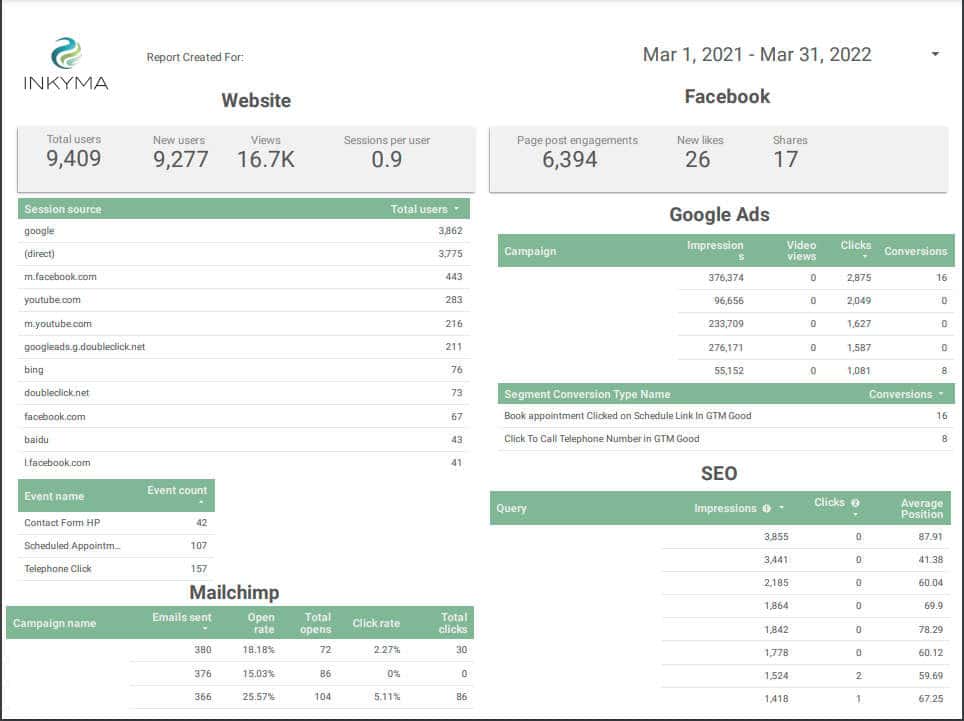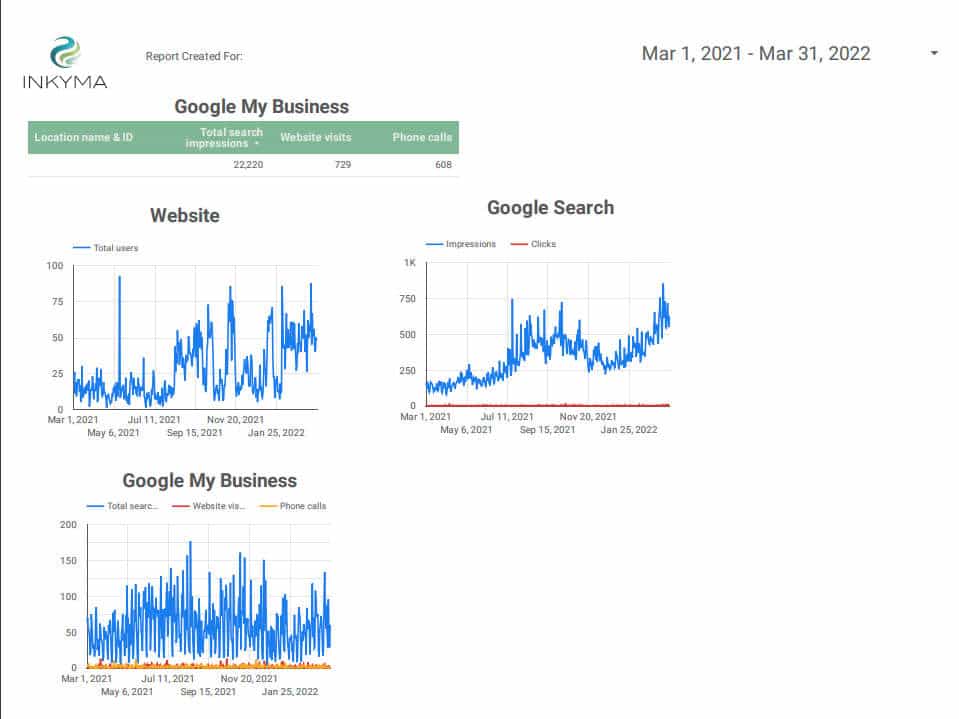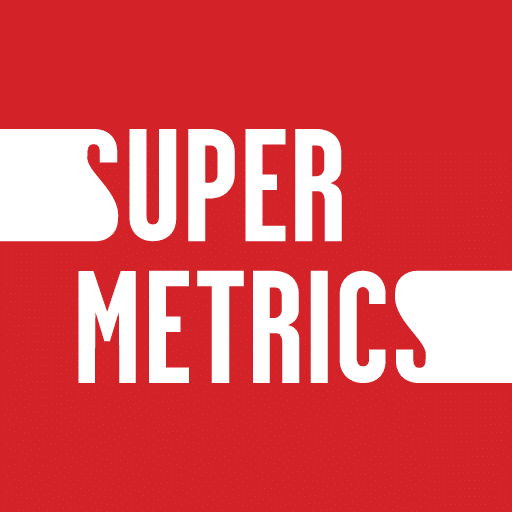
Marketing Reports are great tools for understanding how your marketing is doing. But if you don’t align your report with the right Marketing Report Objectives then you can’t measure how effective your marketing is based on your goals. First, you need marketing goals, this article will specifically talk about the goal to increase sales.
There are 7 primary marketing report objectives you can create and use to measure the effectiveness of the marketing goal to increase sales.
- Brand Awareness
- New Product | Service Launch
- Cross-sell to existing customers
- Retain Current Customers
- Attract New Customers
- Expanding Business Into New Locations
- Price Increase
We will go into more detail about what these primary marketing report objectives are, how to create SMART objectives and how to use them to create a marketing report to track the objectives so you know if your marketing is working or not and where you can make changes.
- Marketing Goals Vs Objectives
- Brand Awareness
- New Product | Service Launch
- Cross-sell Existing Customers
- Retain Current Customers
- Attract New Customers
- Expanding Business Into New Locations
- Price Increase
- Implement Marketing Report Objectives Reports
- Track Marketing Report Objectives Using An Aggregate Google Data Studios Report
Marketing Goals Vs Objectives
Many small business owners consider market goals and objectives to be interchangeable but when you are trying to create marketing report objectives to track marketing campaigns they are two different things.

A marketing goal is what you want to achieve overall with your marketing program. The objectives are the specific things you are going to do to and track meet the goals.
The way to tell the difference is that an objective will be created using SMART Criteria:
- Specific
- Measurable
- Assignable/Attainable
- Relevant
- Time-Bound
We are going to take a deeper look at the objectives you can create for the marketing goal of increasing sales for a small business.
Brand Awareness
Brand awareness is key to getting sales. If people don’t know you exist then they don’t know they can buy what you are selling. Often times business owners will think this a virtue of being the “Best Kept Secret” But you really want people to know that you are there and available to them.
There are levels of awareness to consider. Awareness of the product or services that you offer and awareness of your company. For most businesses, the target audience knows that the product or service is available to buy they just then need to decide who they are going to buy it from.
Create an objective of increasing awareness of your company by promoting your brand to people in your target marketing who don’t know about your business. An example is: Increase company awareness to 30% of my target marketing in 6 months. This can be done with digital advertising, Increase social media account followers, and referral programs.
The other type of awareness is product or service awareness. Sometimes your offering is a whole new category and the market doesn’t know they can get what you offer from anyone. This is an example of a Blue Ocean Strategy where you create the market and at least at the start, you are the only one in the market.
For this type of objective, you need to think about market and brand awareness together. Objective example: reach 30% of your target marketing in the 1st year. Notice with this objective the time frame is longer because you are convincing people they need something that they don’t know about yet. You will have to run campaigns to educate on the market first. The most effective type of campaign for this would be SEO articles and digital advertising.
Writing articles about how the new market solves their existing problem will educate them on why they need it and the advertising will help get them to the articles faster than just SEO alone. All the articles should be branded and link back to your service pages for when they are ready to buy.
New Product | Service Launch
Expanding product and service offerings is a quick way to increase sales for your company. Often your new offers come from requests that you get from your long-term clients or people that you speak with that don’t buy what you currently offer.
As a general rule, you want to first decide who the target market is for your new offering before you create your objective. Often it will be the same or very similar to your existing audience but not always. Example objective: Market new offering to existing target market with 2 % market share growth within the 1st year of production. Measuring in share percentage allows you to create your slice of the pie for that product. This percentage can be based on what you did with your existing offering when you first launched them if it’s part of your existing target market.
If your offering is going to be introduced to a target audience that you don’t currently service then you need to do research on market share growth benchmarks for that industry and audience. Market share growth varies greatly depending on the saturation of the marketplace and how large the target audience is.
For example, if you are selling coffee beans, while the target audience is extremely larger so are the competitors in the field so realistically you have to set low market share growth objectives if you are just starting to sell in the market as it will take time to build a loyal customer base for your brand.
Cross-sell Existing Customers
On average most businesses will sell multiple products or services to a specific target audience. In this case, if an existing customer in the target audience buys one service, they are more likely to buy a second or third service from you. The reason you may not see that happening today is the lack of awareness of the other offerings. People are very focused on what they need at a moment in time and ignore everything else until they have what they need. Don’t assume that just because someone is a client for one offering they know everything you do.
Cross-selling to existing customers is a great way to increase sales just by making them aware of what else you offer. The key to this is they need to be happy customers. They won’t buy from you again if they didn’t have a good experience the first time with you.
Objective example: Sell service XXX to 30% of those customers who bought service YYY over the next 6 months with an email marketing campaign. Here is an example of what that looks like for a cleaning company.
Sell monthly cleaning services to 30% of the customers who have only purchased holiday cleaning packages in the past year over the next 6 months with an email campaign of 4 email sends over the next 6 months.
You can be more aggress with your growth objectives when selling to existing customers. They are more willing, 50% – 70% more willing (Semrush) to buy additional services from you. They will also spend 31% more on the average order with you as well. Given these statics, a 30% increase in revenue is extremely realistic as long as you have great customer ratings.
Retain Current Customers
Customer Retention is a key factor in sales growth especially if you sell recurring, or subscription services. You need to retain your existing customers while attracting new customers to see significant sales increase otherwise new customers are only replacing customers who have left.
The keys to customer retention are
- Sell a great product or service
- Provide amazing customer service
- Reward loyal customers with exclusive offers that are NOT available to new customers
You can get ideas on how to create customer retention strategies by listening to the Inkyma Marketing Strategies Podcast Episode 29 – Maximizing Your Existing Customers To Grow Your Business.
Objective Example Increase customer retention by 10% in 12 months with an exclusive loyalty offer sent to customers who have spent $XX dollars with us over the last 12 months. The offer goes out to all clients as they meet the threshold. The dollar amount you choose should be based on the average sales of your customers and what you consider to be most lucrative for you.
It’s easier to sell to existing customers if you have a reoccurring sales model in place. This is a harder strategy to use if you are a Real Estate Agent selling homes verse being a company that sells apparel or a software subscription company.
Choose your sales goals based on how you sell to customers.
Attract New Customers
New customers are a significant part of the growth in sales. While it takes more time to get new clients it allows you to cross-sell to them once they have become clients. This creates balance in your sales growth plan between new and existing customers.
As a general rule growing your customer base by 10% each year (Inc) is achievable and keeps your business healthy. To do this you need outbound marketing to people who have not used your services or leads who have not closed. If you are a B2C business digital advertising is a good way to generate awareness combined with incentive emails to leads who have not yet purchased from you.
Another marketing tactic is to create a referral program. Incentivizing existing customers to share their stories so that others can have a great experience is one of the easiest and cheapest ways to get new customers. Referral customers have already given you a higher level of trust because of who recommended them. Because they trust the source, they trust you.
Expanding Business Into New Locations
If you are a location-based business a great way to increase sales is by opening new locations in areas you don’t already service. When opening a new location you have to do all the things you would do if you are opening a brand new business. For a new business, awareness and sales are the primary marketing report objectives to track.
Brand awareness grows based on outbound marketing activity; running general advertising ads, social media, and implementing a solid SEO strategy are the primary ways to grow brand awareness in a new location. A measurable goal for awareness is to add 10% increased awareness for every awareness tactic you implement. As for time, digital advertising generates awareness the fastest while SEO takes the most time. If you are only going to implement an SEO strategy give yourself 6 months to a year to reach your targets.
Objective Example: Awareness increased by 50% & sales Increased by 10% in a new location in 6 months with digital advertising, social media organic posts, and local SEO.
The number one Local SEO tactic you can set up is creating a separate Google My Business Listing for each of your locations. This allows you to show up on search maps and lists when someone is looking for something using the “near me” search. This is also faster than traditional SEO as Google indexes the Google My Business Listing instantly once it’s been verified. Learn More about setting up a Google My Business by listening to Inkyma’s Podcast Google My Business Review: Increase Local SEO
Price Increase
Increasing your pricing is one of the quickest ways to increase your revenue and it’s a very valid way to improve your overall profits as many small businesses often undercharge for their products and services. Whiles its quick it can also cause you problems with existing customers. You will need to decide if you are going to raise prices for existing customers as well as new customers.
Calculating your marketing report objectives for this one is straightforward. Decide who you will increase pricing for and when. For existing customers, you can use the percentage increase times the number of customers to calculate your goal. For new customers, you can use your percentage increase and your projected new customer increase percentage growth goal to determine what this revenue will look like.
Implement Marketing Report Objectives Reports
Now that you have determined your marketing goals and your objectives you need to create a report that tracks your progress. For each type of marketing campaign, you create the systems you use to create them will also have some type of reporting. Here is a table of marketing report objectives based on a sales goal:
| Objective | Tactic To Achieve Objective | Reporting Data To Review | Reporting Systems |
| Brand Awareness | Website Google My Business Listing Social Media Pages Search Engine Optimization Digital Advertising | Impressions Clicks Followers Top Keywords in Search Average Search Position | Google Analytics GMB Insights Social Media Reporting Advertising Platform Reporting Google Search Console |
| New Product | Service Launch | Website Update Google My Business Update Announcements On Social Media & Email Digital Ads for new product service | New Page Impressions New Page Clicks Social Post Engagement Digital Ads Impressions, Clicks, and Conversions | Google Analytics GMB Insights Social Media Reporting Advertising Platform Reporting |
| Cross-sell to existing customers | Email Marketing Campaigns | Email Opens Email Clicks Link Clicks | Email Marketing System Report |
| Retain Current Customers | Customer Services Email Marketing Campaigns | Email Opens Email Clicks Link Clicks | Email Marketing System Report |
| Attract New Customers | Website Google My Business Listing Social Media Pages Search Engine Optimization Digital Advertising Referral Program | Impressions Clicks Followers Top Keywords in Search Average Search Position Referral Program Users | Google Analytics GMB Insights Social Media Reporting Advertising Platform Reporting Google Search Console Referral program tracking |
| Expanding Business Into New Locations | Website Update New Google My Business Listing Announcements On Social Media & Email Digital Ads targeting new location | New Page Impressions New Page Clicks Social Post Engagement Digital Ads Impressions, Clicks, and Conversions | Google Analytics GMB Insights Social Media Reporting Advertising Platform Reporting |
| Price Increase | Calls and email announcements if you are increasing existing customers’ pricing. | Increase in Revenue | Accounting program |
Read our article on why data analytics is important in marketing-led business growth where we share a more detailed chart of what to track by the marketing report objectives tactics.
Track Marketing Report Objectives Using An Aggregate Google Data Studios Report
You can track all your marketing report objectives separately but this is very time-consuming and makes it difficult to see the whole picture of how your campaigns are working in one place.
We create Google Data Studio Reports for all of our clients. The data is collected using a data aggregator called Supermetrics. Supermetrics provides 70 plus connectors via Google Data Studio. They also provide a JSON/CSV/XML connector so you can create your own connection if one is not provided for a specific platform.
Here are a few screenshots of how we set up Google Data Studio Reports to Review with our customers


Depending on your marketing report objectives you will set up your dashboard report differently. The key is to have the relevant data on one or two pages so you can see how they affect each other and to see if you are meeting your Marketing Goals and Objectives.







